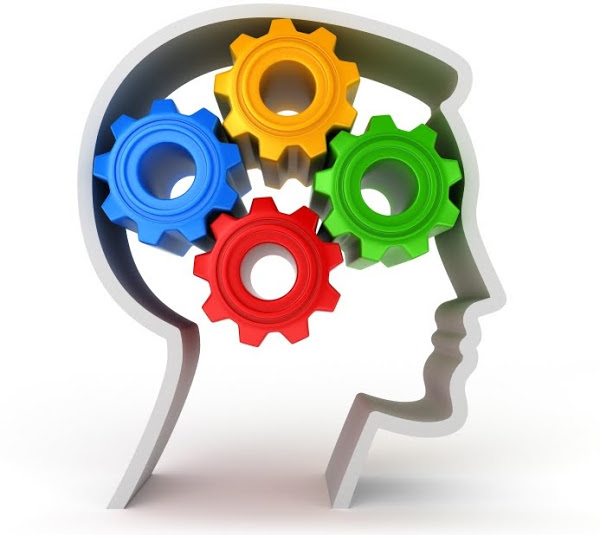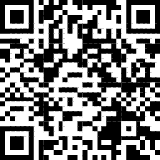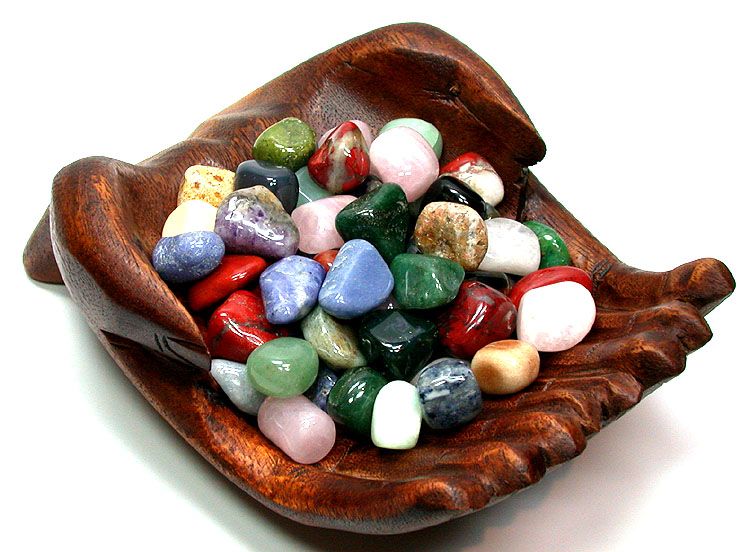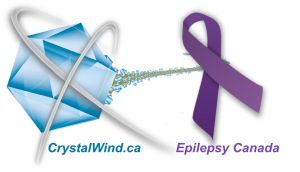Real vs Imaginary in the Brain and Body
- Details
- Written by David R. Hamilton PhD

The brain, in many ways, doesn’t distinguish real from imaginary.
Take a simple example of stress. Your brain responds to a stressful situation by releasing stress hormones. But your brain also releases the stress hormones when you remember a past stressful event or even when you vividly imagine one. Whether you’re really there in the stressful situation, you’re remembering it or imagining it, is all much the same to your brain. It releases stress hormones each time.
Another thing to consider is that a stressful event is not absolutely a stressful event. All you can be certain of is that it is stressful for you. The same event might be experienced differently for someone else. So, the event itself is not stressful. It’s how you think about it that’s stressful and that results in your feelings of stress. And it’s your feelings of stress that produce the stress hormones. So, you produce stress hormones because of how you feel, regardless of whether you’re there (in the stressful situation) in person or there in your mind.
In other blogs and in my books, I’ve written than kindness is the opposite of stress. Most people assume that peace is the opposite of stress. Peace is an absence of stress, not it’s opposite. In physiological terms, the feelings associated with kindness produce opposite effects to the feelings associated with stress. So, does the same type of real vs imaginary effect apply to kindness?
It seems so. The feelings associated with kindness, what social scientist Jonathan Haidt has called elevation, are produced regardless of whether you’re having a direct experience of kindness (as the giver or receiver or even as a witness to it), or whether you’re remembering an experience of kindness, or even whether you are vividly imagining one. The same feelings are produced in each instance. And just as with stress, it’s the feelings that produce the hormones. In the case of kindness, it’s kindness hormones.
The main kindness hormone is oxytocin, otherwise known as the love drug, the hug drug, the cuddle chemical, or any other similar affectionate name. It’s the feelings of warmth and connection that produce oxytocin.
So, whether you’re being kind, receiving kindness, or witnessing kindness in a real or imaginary setting, you feel the same feelings and therefore produce the same kindness hormone. Just as with stress, your brain doesn’t distinguish between real and imaginary.
Can the same be said with other systems of the body? It seems so. Numerous studies have shown that imagining touching or moving a part of the body activates the corresponding brain region as if we really did touch or move that body part. For example, researchers at the Karolinska Institute in Sweden showed that when a person imagined moving fingers, toes, or even their tongue it activated the fingers, toes, and tongue regions of the brain as if they really were moving their fingers, toes or tongue.
The famous ‘piano study’ is an excellent example from neuroscience. Researchers at Harvard University, led by Alvaro Pascual-Leone, compared the brains of people playing a sequence of notes on a piano with the brains of people imagining playing the notes. The region of the brain connected to the finger muscles was found to have changed to the same degree in both groups of people, regardless of whether they struck the keys physically or mentally.
It is this phenomenon – the fact that the brain processes imaginary as if it were real – that allows sports people to benefit from visualisation practices. Several studies have shown that players can improve on their golf shots, tennis strokes, net shots in basketball, ice skating, football, or just about anything. Studies have shown people increasing their muscle strength by imagining themselves flexing muscles or lifting weights. In a study, for example, at the Lerner Research Institute in Cleveland, imagining flexing the little finger for 15 minutes daily for 3 months was shown to increase muscle strength by 35% … and the volunteers hadn’t even lifted a finger.
The technique has also allowed people who have had a stroke to recover faster, as has been demonstrated in several studies that compare patients receiving physiotherapy with patients doing visualisation of movements as well as the physiotherapy. According to these research studies, those who do the visualisation practices recover faster than those who do physiotherapy alone. A 2014 meta-analysis of the use of ‘mental imagery’ in stroke rehabilitation noted this compelling evidence and concluded that it could be a ‘viable intervention’ and that it renders ‘unlimited practice opportunities’.
The benefits rely on the fact that when a patient visualises movement, the brain processes it as if they really are moving, and so imagined movement becomes like extra physical practice as far as the brain is concerned.
We can even extend the idea onto eating. In a study led by Carey Morewedge, at Carnegie Mellon University, volunteers either ate or imagined eating small sweets. Some volunteers were asked to imagine eating several sweets and others were asked to imagine eating only a small number. When given the chance to eat real sweets later, those who imagined eating the most had less appetite for more. It was concluded that imagining eating impacted the brain like real eating does and actually supressed the appetite for more, just as real eating does. It was as if the brain were saying, “OK, that’s enough. I’m full now” even though the person hadn’t actually eaten anything but had just imagined it.
In other words, in some ways the brain processed imagining eating as if the person really was eating. A word of caution here, though. Research hasn’t investigated whether imagining eating affects the body in other ways, like perhaps without actual food a person might deprive their bodies of needed nutrition. But the point is, again, that the brain isn’t making a noticeable distinction between real or imaginary.
How far does this go?
Studies even suggest that the immune system responds in a similar way. Volunteers asked to imagine increasing levels of certain antibodies, or immune cells, were able to increase their numbers. Furthermore, in a randomised controlled trial of breast cancer patients undergoing chemotherapy, around half of the patients were asked to also imagine their immune cells like piranha fish and to imagine them destroying cancer cells. In those who visualised, immune system activity was higher than it was in those who didn’t visualise. In fact, the immune systems of those who visualised were showing high levels of cytotoxicity even after the fourth (and final) cycle of chemotherapy.
So, generally speaking, insofar as the above examples go, it seems to be that the brain and body don’t distinguish between whether something is real or whether we just imagine it as real.
The question now becomes: what does that mean for us?
References
All references and more complete discussions can be found in David R Hamilton PhD, ‘How Your Mind Can Heal Your Body‘, (Hay House, 2019). Individual references are below.
Fingers, toes and tongue study
H. Ehrsson et al., ‘Imagery of voluntary movement of fingers, toes, and tongue activates corresponding body-part-specific motor representations’, Journal of Neurophysiology, 2003, 90(5), 3304-3316. Link to studyPiano study
Pascual-Leone et al., ‘Modulation of muscle responses evoked by transcranial magnetic stimulation during the acquisition of fine motor skills’, Journal of Neurophysiology, 1995, 74(3), 1037-1045. Link to studyLittle finger strength study
K. Ranganathan et al, ‘From mental power to muscle power – gaining strength by using the mind’, Neurophysiologia, 2004, 42(7), 944-956. Link to studyStroke rehabilitation meta-analysis
Y. Kho et al., ‘Meta-analysis on the effect of mental imagery on motor recovery of the hemiplegic upper extremity function’, Australian Occupational Therapy Journal, 2014, 61(2), 38-48. Link to studyImmune system visualisation for cancer study
O.Eremin et al., ‘Immuno-modulatory effects of relaxation training and guided imagery in women with locally advanced breast cancer undergoing multimodal therapy: A randomised controlled trial’, The Breast, 2009, 18, 17-25. Link to study
David R. Hamilton PhD
After completing his PhD, David worked for 4 years in the pharmaceutical industry developing drugs for cardiovascular disease and cancer. During this time he also served as an athletics coach and manager of one of the UK’s largest athletics clubs, leading them to three successive UK finals. Upon leaving the pharmaceutical industry, David co-founded the international relief charity Spirit Aid Foundation and served as a director for 2 years.
Now a bestselling author of 6 books published by Hay House, he offers talks and workshops that fuse science, the mind, and spiritual wisdom. David writes a regular blog for the Huffington Post.
Source Here
Liked this article? Dive deeper into personal growth and wellness! Check out CrystalWind.ca for spiritual wisdom or explore AromaWorx.ca for natural well-being tips. Spread the positivity—share this with friends on their happiness journey!
Let’s Chat! Drop Your Thoughts Below! ![]()
Latest Articles

Imagine a world of inspiration and healing, free for all—made possible by YOU!
Donate Now—Ignite the Magic at CrystalWind.ca!

Epilepsy - Finding A Cure
Your donation can make a difference!
Help us find a cure – donate now!
Unlock Your Light: Join Lightworkers Worldwide on CrystalWind.ca!
Follow Us!
Featured This Month
Abalone Shell
Echos Of The Ancestors Abalone strengthens the structure of the body and th... Read more
Chalcedony
The Stone Of Orators Chalcedony was very popular as a decorative stone in ant... Read more
Egyptian Zodiac/Astrology
Egyptian astrology was one of the earliest forms of astrology. The Egyptians w... Read more
Sun in Cancer
Cancer Sun Sign Characteristics Overview The name "Cancer" comes from Latin, ... Read more
Lugh - Celtic God Of The Sun
The god Lugh was worshiped in Ireland as a deity of the sun. This connection... Read more
Lammas by The Hedgewitch
Although in the heat of a Mid-western summer it might be difficult to discer... Read more
Cancer Mythology
The Mythology of Cancer: A Celestial Tale of Loyalty and Sacrifice Among th... Read more






























































































































































